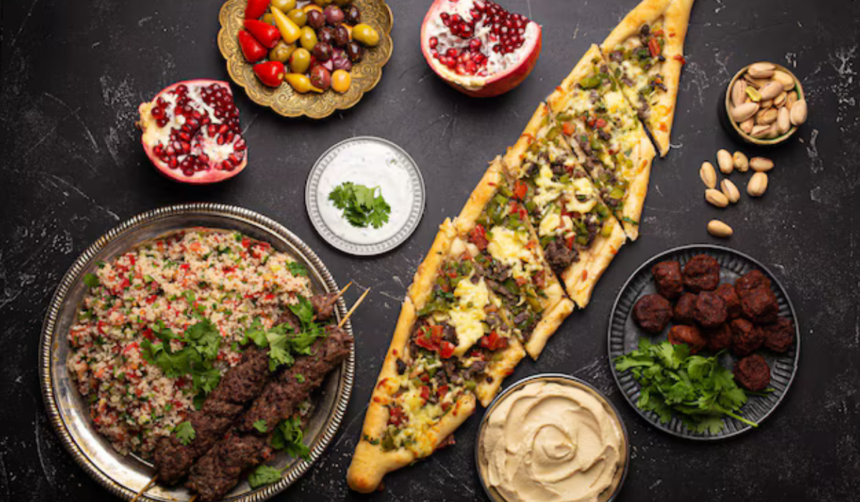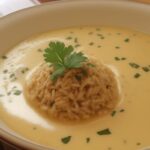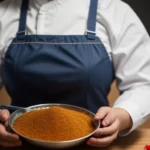A Taste of Turkey: Turkish Culinary Traditions and Techniques
Turkey, a country that spans across Europe and Asia, is renowned for its rich culinary heritage that is deeply rooted in its history and culture. Turkish cuisine is a fusion of various influences, including Ottoman, Middle Eastern, Balkan, and Mediterranean, resulting in a diverse and flavorsome array of dishes that have captivated the palates of food enthusiasts worldwide. In this article, we will explore the fascinating world of Turkish culinary traditions and techniques that have shaped the country’s gastronomic landscape.
1. A Brief History of Turkish Cuisine
Turkish cuisine dates back to the times of the Ottoman Empire, where it was heavily influenced by the culinary traditions of the various regions that were under Ottoman rule. Over the centuries, Turkish cuisine has evolved and adapted, incorporating elements from Arab, Persian, Byzantine, and Central Asian cuisines. Traditional ingredients such as olives, wheat, lamb, and dairy products have remained staples in Turkish cooking, contributing to the unique flavors and textures that define the cuisine.
2. Key Ingredients in Turkish Cooking
Turkish cuisine relies heavily on fresh and seasonal ingredients, with a particular emphasis on the use of herbs, spices, and vegetables. Commonly used herbs and spices include mint, oregano, cumin, paprika, and sumac, which add depth and complexity to dishes. Vegetables such as eggplant, tomatoes, peppers, and zucchini feature prominently in Turkish cooking, along with meats like lamb, beef, and poultry. Dairy products like yogurt, cheese, and butter are also essential components of many Turkish dishes.
3. Culinary Influences in Turkish Cuisine
Turkish cuisine has been influenced by a myriad of cultures and culinary traditions, resulting in a diverse and eclectic array of dishes. The Ottoman Empire’s vast territories brought in influences from the Middle East, Balkans, Caucasus, and Central Asia, while the Mediterranean coast contributed elements of Greek, Italian, and Arab cuisines. The rich tapestry of flavors and techniques in Turkish cooking reflects the country’s multicultural heritage and its position as a crossroads between Europe and Asia.
4. Regional Variations in Turkish Cuisine
Turkey’s diverse geography and climate have given rise to a wide range of regional variations in its cuisine. The coastal regions along the Aegean and Mediterranean seas are known for their seafood dishes, olive oil-based recipes, and use of fresh herbs and vegetables. Inland regions like Central Anatolia and Eastern Turkey feature hearty meat dishes, sausages, and bread-based specialties. Each region of Turkey boasts its own unique culinary traditions and ingredients, showcasing the country’s culinary diversity.
5. Traditional Turkish Dishes
Some of the most iconic and beloved dishes in Turkish cuisine include kebabs, mezes, pilafs, and baklava. Kebabs, grilled or skewered meats marinated in herbs and spices, are a staple of Turkish cuisine and come in various forms like doner, shish, and adana. Mezes are small plates of appetizers that are typically served alongside raki, a traditional Turkish anise-flavored spirit. Pilafs, or rice dishes, are a common accompaniment to meat and vegetable dishes, while baklava, a rich and sweet pastry made with layers of filo dough, nuts, and syrup, is the quintessential Turkish dessert.
6. Traditional Cooking Techniques in Turkish Cuisine
Turkish cuisine employs a variety of cooking techniques that enhance the flavors and textures of its dishes. Grilling, roasting, and braising are popular methods of preparing meats, while sautéing and stir-frying are often used for vegetables. Slow cooking in clay pots or on low heat is a common technique for stews and casseroles, allowing the flavors to develop over time. In baking, traditional wood-fired ovens are used to make bread, pastries, and desserts, imparting a smoky and rustic flavor to the finished dishes.
7. The Importance of Hospitality in Turkish Culture
Hospitality plays a central role in Turkish culture, and food is a primary way of expressing hospitality and generosity. In Turkish homes, guests are often greeted with an array of dishes and treats, regardless of the time of day. Sharing a meal with friends and family is considered a social ritual, and mealtimes are occasions for lively conversation, laughter, and camaraderie. The concept of “paylasma,” or sharing, is ingrained in Turkish culture, and meals are often served family-style to encourage communal dining and bonding.

8. Turkish Street Food
Turkish street food is a vibrant and popular aspect of the country’s culinary scene, offering quick and delicious bites for locals and tourists alike. Street vendors and food stands dot the streets of Turkish cities, serving up a variety of snacks and dishes that showcase the country’s diverse flavors. Some popular street foods in Turkey include simit (sesame-studded bread rings), borek (flaky pastries filled with cheese, meat, or vegetables), kofte (spiced meatballs), and durum (wraps filled with grilled meats and vegetables). Street food in Turkey is a convenient and affordable way to sample the country’s culinary delights on the go.
9. The Role of Markets in Turkish Cuisine
Turkish markets, or bazaars, are vibrant hubs of culinary activity where locals shop for fresh produce, meats, spices, and other ingredients. Markets are not just places to buy groceries; they are social spaces where vendors and customers interact, exchange recipes, and share cooking tips. Istanbul’s Grand Bazaar and Spice Bazaar are famous for their colorful displays of spices, dried fruits, nuts, and teas, while markets in regional cities like Izmir and Antalya offer a bounty of locally grown fruits and vegetables. Markets are integral to Turkish cuisine, providing access to the freshest and highest quality ingredients for home cooks and professional chefs alike.
10. Turkish Beverages
In addition to its delicious food, Turkey is also known for its refreshing and flavorful beverages. Turkish tea, or cay, is a ubiquitous drink that is enjoyed throughout the day, often served in small tulip-shaped glasses with sugar cubes on the side. Turkish coffee, a strong and aromatic brew made by boiling finely ground coffee beans with sugar and water, is a traditional drink that is served hot and unfiltered in small cups. Ayran, a popular yogurt-based drink that is slightly salty and tangy, is a refreshing accompaniment to spicy or rich dishes. Raki, an anise-flavored spirit that is traditionally enjoyed with mezes, is considered Turkey’s national drink and is often referred to as “Lion’s Milk” for its milky white appearance when mixed with water.
11. Modern Trends in Turkish Cuisine
In recent years, Turkish cuisine has undergone a renaissance, with chefs and food enthusiasts reimagining traditional dishes and ingredients in innovative and creative ways. Modern Turkish cuisine combines traditional recipes with contemporary techniques and global influences, resulting in a fusion of flavors and styles that appeal to a diverse audience. Chefs in Istanbul and other major cities are leading the charge in showcasing the diversity and sophistication of Turkish cuisine, incorporating seasonal and local ingredients, as well as international trends and flavors.
12. Culinary Tourism in Turkey
Culinary tourism is a growing trend in Turkey, with travelers from around the world flocking to the country to experience its rich and diverse culinary traditions firsthand. Food tours, cooking classes, and culinary workshops are popular activities for visitors who want to immerse themselves in Turkish cuisine and culture. From bustling food markets and street food stalls to high-end restaurants and traditional tea houses, Turkey offers a multitude of culinary experiences that cater to every taste and budget. Culinary tourism in Turkey not only highlights the country’s gastronomic offerings but also promotes cross-cultural exchange and appreciation of its rich culinary heritage.
13. Preserving and Promoting Turkish Culinary Heritage
As Turkey’s culinary landscape continues to evolve and adapt to changing tastes and trends, there is a growing interest in preserving and promoting the country’s culinary heritage. Government agencies, culinary associations, and food enthusiasts are working to safeguard traditional recipes, cooking techniques, and ingredients, ensuring that future generations can continue to enjoy and learn from Turkey’s culinary legacy. Festivals, food events, and culinary competitions are held throughout the country to celebrate Turkish cuisine and showcase its diversity and authenticity. By supporting and promoting its culinary heritage, Turkey is preserving an essential part of its culture and identity for future generations to appreciate and savor.
14. The Global Impact of Turkish Cuisine
Turkish cuisine has made a significant impact on the global culinary scene, with Turkish restaurants and food products gaining popularity in international markets. Dishes like kebabs, mezes, and baklava are now staples in many countries, enjoyed by people of diverse cultural backgrounds. Turkish ingredients like sumac, pomegranate molasses, and Turkish delight have found their way into international kitchens, adding a touch of Turkish flavor to dishes from other cuisines. The global popularity of Turkish cuisine is a testament to its richness, diversity, and appeal, as well as to the country’s legacy as a crossroads of culture and cuisine.
15. Conclusion
In conclusion, Turkish cuisine is a vibrant and multifaceted culinary tradition that reflects the country’s cultural heritage, history, and geography. With its diverse array of ingredients, flavors, and techniques, Turkish cuisine offers a sensory journey that delights the palate and nourishes the soul. From traditional dishes to modern interpretations, Turkish food continues to captivate food enthusiasts worldwide, showcasing the country’s culinary creativity and ingenuity. Whether sampling street food in Istanbul, savoring a home-cooked meal in a Turkish household, or dining at a high-end restaurant, experiencing Turkish cuisine is an opportunity to explore the country’s rich and flavorful gastronomic heritage. A taste of Turkey is a taste of history, culture, and hospitality, served with a generous helping of warmth and generosity.
FAQs about “A Taste of Turkey: Turkish Culinary Traditions and Techniques”
- What makes “A Taste of Turkey: Turkish Culinary Traditions and Techniques” a must-read for food enthusiasts? This book offers a comprehensive exploration of Turkish cuisine, providing insights into the rich culinary traditions, techniques, and flavors that define Turkish gastronomy.
- Which aspects of Turkish cuisine are covered in this guide? “A Taste of Turkey” covers various aspects of Turkish cuisine, including traditional dishes, regional specialties, staple ingredients, cooking techniques, and the cultural significance of food in Turkish society.
- Are specific Turkish dishes and culinary techniques highlighted in this book? Yes, this book features a curated selection of Turkish dishes and culinary techniques, ranging from classic kebabs and mezes to elaborate desserts like baklava and künefe. Each dish is accompanied by detailed explanations and step-by-step instructions.
- How does this book celebrate the diverse culinary heritage of Turkey? This book celebrates the diverse culinary heritage of Turkey by exploring the flavors, influences, and traditions that shape Turkish cuisine. It highlights the regional variations and cultural diversity that make Turkish gastronomy so unique.
- Can readers expect to find practical advice and recipes for preparing Turkish dishes at home from this book? Absolutely! “A Taste of Turkey” offers practical advice, cooking tips, and authentic recipes for readers to recreate Turkish dishes in their own kitchens. Whether you’re a novice cook or an experienced chef, this book provides everything you need to embark on a flavorful journey through Turkish cuisine.
Advantages:
- Evocative Title: The title “A Taste of Turkey: Turkish Culinary Traditions and Techniques” is evocative, immediately conjuring images of delicious Turkish cuisine, enticing readers to explore the culinary delights of Turkey.
- Educational Value: Positioning itself as a guide to Turkish culinary traditions and techniques, the title offers readers valuable insights into the rich culinary heritage of Turkey, providing information about traditional dishes, cooking methods, and cultural influences.
- Cultural Exploration: The title encourages readers to delve into the diverse and vibrant culinary landscape of Turkey, fostering a deeper appreciation for the flavors, ingredients, and cooking techniques that define Turkish cuisine.
- Practicality: As a guide, the title serves a practical purpose for travelers or home cooks interested in Turkish cuisine, offering them inspiration and recommendations for exploring Turkish flavors and cooking methods either in Turkey or in their own kitchens.
- Inspiration for Travel and Cooking: The title may inspire readers to plan trips to Turkey to experience its culinary delights firsthand or to experiment with Turkish recipes in their own kitchens, encouraging culinary exploration and appreciation of Turkish gastronomy.
Disadvantages:
- Oversimplified Focus: While the title emphasizes Turkish culinary traditions and techniques, it may oversimplify the complexity of Turkish cuisine and overlook regional variations and specialties, potentially limiting the depth of the discussion.
- Cultural Stereotyping: Focusing solely on Turkish culinary traditions may perpetuate stereotypes about Turkish cuisine, potentially overlooking the diversity of regional cuisines and culinary influences within Turkey.
- Limited Scope: The title may not cover every aspect of Turkish cuisine in depth, potentially leaving out certain dishes or culinary traditions that could provide a more comprehensive understanding.
- Accessibility: Some Turkish ingredients and dishes may be difficult to find outside of Turkey or major culinary hubs, limiting the practicality of exploring Turkish cuisine for readers in other regions.
- Audience Engagement: While the title appeals to readers interested in culinary exploration and Turkish cuisine, it may not attract those seeking a more focused or specialized discussion of specific Turkish dishes or culinary topics.
















